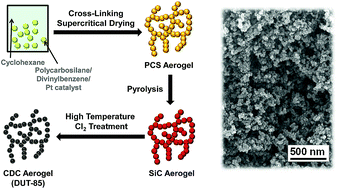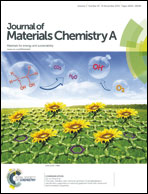Evolution of porosity in carbide-derived carbon aerogels†
Abstract
Carbide-derived carbon (CDC) aerogel monoliths with very high porosity are synthesized starting from polymeric precursors. Cross-linking by platinum-catalyzed hydrosilylation of polycarbosilanes followed by supercritical drying yields preceramic aerogels. After ceramic conversion and silicon extraction in hot chlorine gas, hierarchically porous carbon materials with specific surface areas as high as 2122 m2 g−1 and outstanding total pore volumes close to 9 cm3 g−1 are obtained. Their pore structure is controllable by the applied synthesis temperature as shown by combined nitrogen (−196 °C) and carbon dioxide (0 °C) measurements coupled with electron microscopic methods. The combination of large micropore volumes and the aerogel-type pore system leads to advanced adsorption properties due to a combination of large storage capacities and effective materials transport in comparison with purely microporous reference materials as shown by thermal response measurements.


 Please wait while we load your content...
Please wait while we load your content...